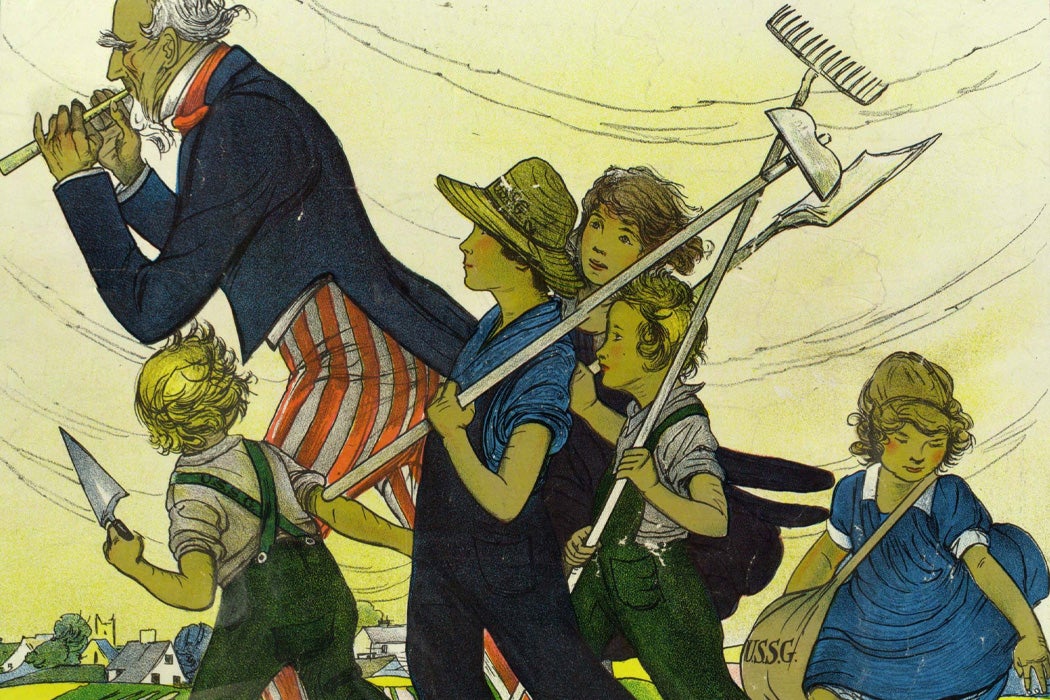School gardens are a national phenomenon, but they were also a major part of U.S. culture from the 1890s to the 1920s. The plots weren’t just about flowers, fruits, and vegetables, either. Environmental historian Brian Trelstad unearths the history of “school gardens in hundreds of cities and manufacturing towns in the first two decades of the twentieth century.”
The school gardens were part and parcel of the reformist Progressive era, designed to
teach children about nature, to green the industrial city, to Americanize immigrants, and to instill the ethics of hard work and patriotism. They also aimed to grow vegetables and flowers, for sale and domestic consumption.
Trelstad points out that these communal gardens stemmed from the Nature-Study Movement, a “group of [late nineteenth-century] educators who sought to make learning more interesting through use of nature in the classroom.” Originally, the idea of the Nature-Study Movement was to keep rural kids on the farm by teaching them to love the earth. This was avowedly anti-city, but the idea evolved as urban Progressives adopted it. After all, urban kids were even less likely than rural ones to know anything about plants. The first urban school garden was a project of the Putnam School in Roxbury, Massachusetts, in 1891.
To educators at the time, gardens seemed just the thing to help keep the burgeoning urban youth population under control. Trelstad quotes one of these urban Progressives who argued in 1880 that city children free of a connection to nature turned towards “hoodlumism, juvenile crime, and secret vice.”

“From the selection of the land to the recruitment of children to the selection of crops, control of the children and their moral development was a primary consideration” in these school gardens. School gardens were seen as a vital component in civic and social engineering in an era when both immigration and child labor laws resulted in tremendous growth in the number of schoolchildren. By 1905, “the gardens had gone from being occasional experiments to common sights in most large cities in this country,” Trelstad writes. They had names like the “Good Citizen Factory.”
World War I fueled Victory Garden grants, and this first school garden phase culminated in a “U.S. Garden Army” of school children producing food for the WWI war effort.
After the war, however, federal funding dried up. Immigration was severely restricted and there was no longer a flood of former child workers to incorporate into schools. New forms of recreation, like the scouts movement, summer camp, and “Fresh Air” charities became the “‘customary thing’ to control the moral backsliding of children during their summer vacations.”
Get Our Newsletter
By the mid 1920s, schools gardens had disappeared, a victim of changing mores, and loss of both federal and local funding.



 via
via 



